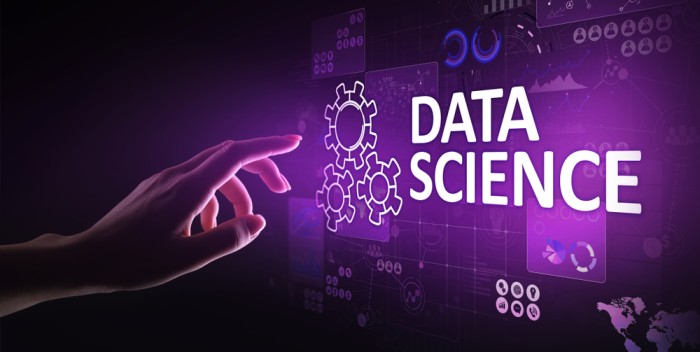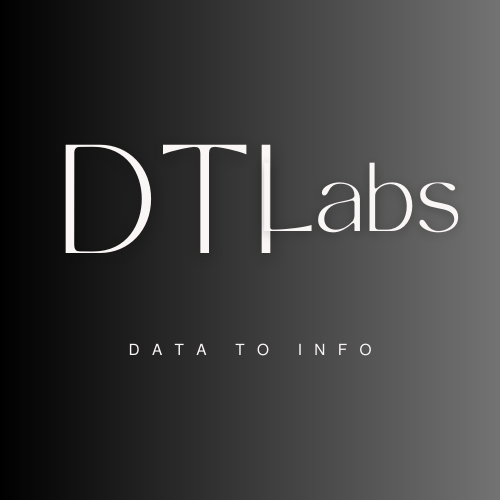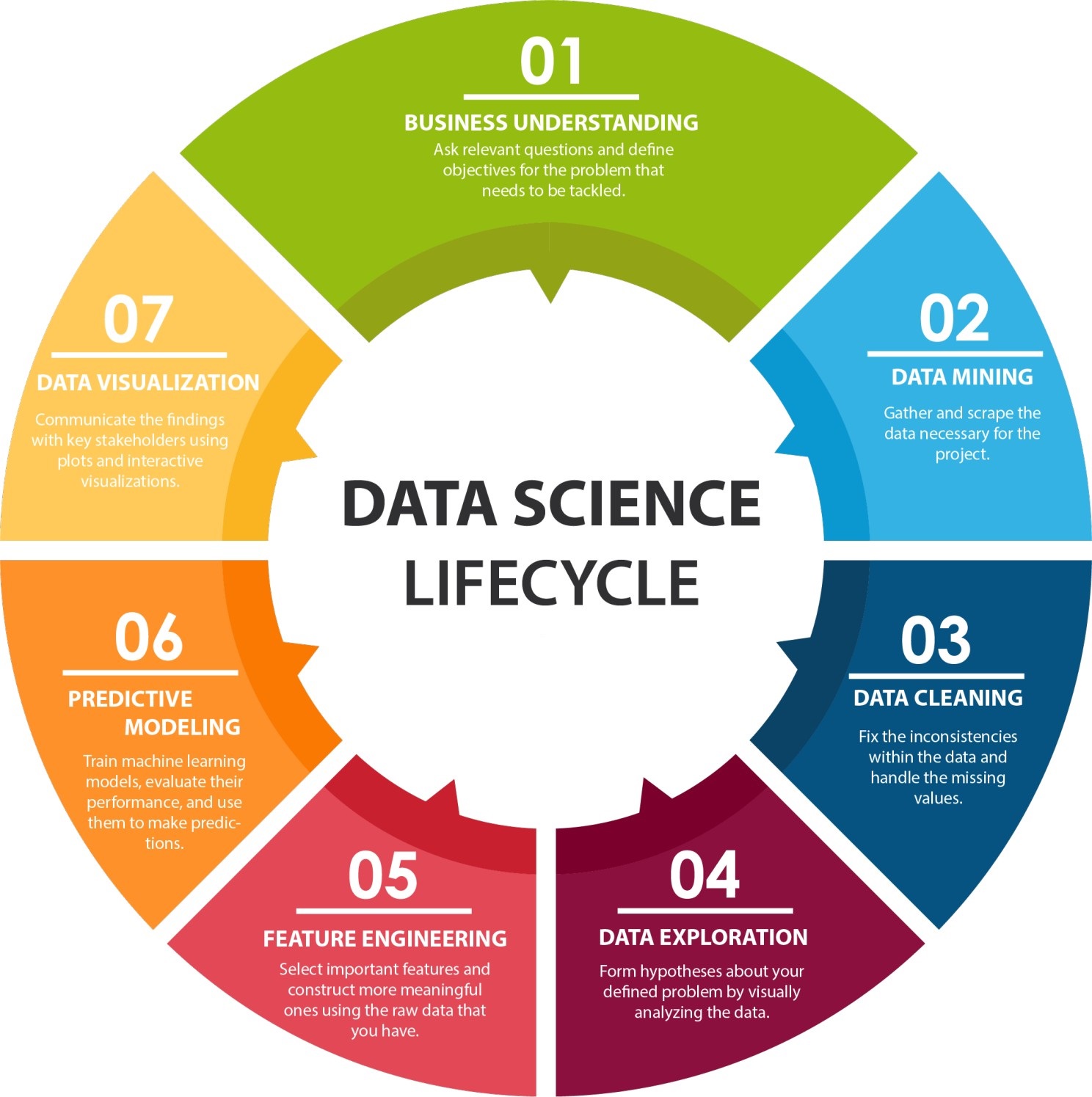Introduction
Data science has emerged as a rapidly evolving field, revolutionizing industries across the globe. As we step into our digital future, it’s crucial to understand the roadmap to becoming a successful data scientist. This comprehensive guide will provide you with essential steps, resources, and tools to navigate the data science landscape and excel in this dynamic field.

Select Your Workspace
Several educational platforms now offer coding exercises that can be completed directly within the browser, eliminating the need for local installations. An example of this is DataCamp’s learning platform, which allows users to learn coding without requiring any downloads. However, for optimal learning, it is recommended to have an Integrated Development Environment (IDE) installed on your personal computer. It is advisable to explore different marketplaces that provide a variety of IDE options, as each platform may offer unique features and improvements compared to others.
- Anaconda: Anaconda is a comprehensive toolkit that caters to all your coding needs. It provides various environments like Powershell prompt, Jupyter Notebook, PyCharm, and even supports R Studio if you’re interested in exploring R programming.
- Atom: Atom is a Python interface that offers advanced functionalities and comes highly recommended by experts.
- Google Colab: Google Colab is a cloud-based platform similar to Jupyter Notebook. It eliminates the need for local installations as all the essential libraries like NumPy, Pandas, Matplotlib, and Sci-kit Learn are already pre-installed.
- PyCharm: PyCharm is an exceptional IDE that facilitates integration with libraries such as NumPy and Matplotlib. It allows you to work with array viewers and interactive plots, enhancing your programming experience.
- Thonny: Thonny is an IDE specifically designed for teaching and learning programming. It includes features like a debugger, code completion, and syntax error highlighting to support beginners in their programming journey.
Step 1:
Establish a Strong Foundation Begin by developing a solid foundation in mathematics, statistics, and programming. Brush up on key concepts such as linear algebra, probability, and calculus. Acquire proficiency in programming languages like Python or R, which are widely used in the data science community.
Python and Theoretical Computer Science (Fundamentals):
| Python Programming Python Installation & Setup Python Virtual Environment Python identifiers and input Python operators Python if else ladder Python loops Python Lists and Sets Tuples Python Maps & Dictionary Python Function Python lambda functions Python OOPs Python OOPs – Class & Objects Inheritance in Python OOPs Abstraction in Python OOPs Polymorphism in Python OOPs Encapsulation in Python OOPs Python exception handling File Handling: Python (os) Python Strings Python Regular Expression Python regex findall() Python regex search() Python regex sub() Python regex match object | Intro to Computer Science Binary Number System Arithmetic Logic Unit Components of Logic Building Arrays 1-D Array 2-D Arrays Python Time and Space Complexity Sortings Python sorting Insertion Sort Bubble Sort Quick Sort Merge Sort Searching Linear Search Binary Search | Theoretical Computer Science Boolean Algebra Circuit Design Computer Architecture Memory and Processor Interfaces and Drivers Computer Networking BIOS and OS Embedded Systems |
Mathematics:
| Linear Algebra Calculus | Probability Statistics |
Step 2:
Learn the Fundamentals of Data Science Gain a comprehensive understanding of the fundamental concepts and techniques in data science. This includes exploratory data analysis, data visualization, data preprocessing, and feature engineering. Familiarize yourself with key statistical methods, machine learning algorithms, and predictive modeling techniques.
Step 3:
Dive Deep into Machine Learning Deepen your knowledge of machine learning algorithms, including both supervised and unsupervised learning. Learn about popular algorithms such as linear regression, decision trees, random forests, support vector machines, and neural networks. Explore techniques for model evaluation, optimization, and regularization.
Step 4:
Acquire Data Manipulation and Analysis Skills Master the art of data manipulation and analysis. Learn how to work with large datasets using libraries like pandas and SQL. Develop skills in data cleaning, data wrangling, and data integration. Understand how to extract valuable insights from diverse data sources.
Step 5:
Enhance Your Knowledge of Advanced Topics Stay updated with the latest advancements in data science. Dive into advanced topics like natural language processing, deep learning, time series analysis, and recommendation systems. Explore specialized domains such as computer vision, big data analytics, and reinforcement learning.
Step 6:
Develop Your Problem-Solving Skills Sharpen your problem-solving abilities by participating in data science competitions and real-world projects. Platforms like Kaggle offer a plethora of datasets and challenges to hone your skills. Collaborate with peers, join data science communities, and actively engage in discussions to gain valuable insights and feedback.
Resources for Learning Data Science:
- Online Courses: Platforms like Coursera, edX, and Udemy offer a wide range of data science courses from esteemed institutions and industry experts.
- Books: Explore books such as “Python for Data Analysis” by Wes McKinney, “The Elements of Statistical Learning” by Trevor Hastie, Robert Tibshirani, and Jerome Friedman, and “Hands-On Machine Learning with Scikit-Learn, Keras, and TensorFlow” by Aurélien Géron.
- Blogs and Websites: Follow renowned data science blogs like Towards Data Science, KDnuggets, and Analytics Vidhya for insightful articles, tutorials, and industry trends.
- Online Communities: Engage in data science communities like Data Science Stack Exchange and Kaggle forums to connect with fellow enthusiasts and seek guidance.
Tools and Technologies:
- Programming Languages: Python and R are widely used for data science, with Python being the most popular due to its extensive libraries like NumPy, pandas, and scikit-learn.
- Data Manipulation and Analysis: Utilize tools like pandas, SQL, and Apache Spark for efficient data manipulation, analysis, and querying.
- Machine Learning Libraries: Explore popular machine learning frameworks such as scikit-learn, TensorFlow, and PyTorch for building and deploying machine learning models.
- Data Visualization: Use libraries like Matplotlib, Seaborn, and Plotly to create visually appealing and informative data visualizations.
- Cloud Platforms: Familiarize yourself with cloud platforms like AWS, Azure, and Google Cloud for scalable data storage, processing
Conclusion
Embarking on a data science journey in todays era requires a systematic roadmap to navigate through the vast landscape of this rapidly evolving field. By following the steps outlined in this ultimate guide, you can establish a strong foundation, delve into key concepts and techniques, and acquire the necessary skills to excel as a data scientist.
Remember to continuously update your knowledge and stay abreast of the latest advancements in data science. Engage with the data science community, participate in competitions, and undertake real-world projects to sharpen your problem-solving skills and gain practical experience.
Leverage a range of resources, including online courses, books, blogs, and communities, to enhance your learning journey. These resources provide valuable insights, tutorials, and industry trends that will keep you informed and inspired.
Equally important are the tools and technologies you choose to master. Python, R, libraries like pandas and scikit-learn, and visualization tools such as Matplotlib and Plotly are just a few examples of the essential tools and technologies used in data science.

